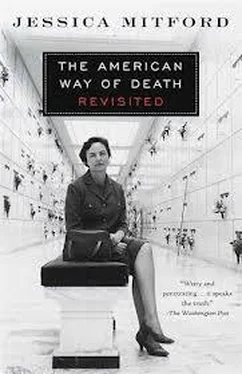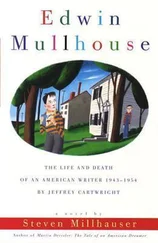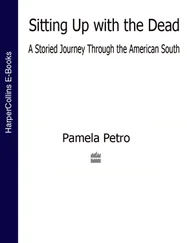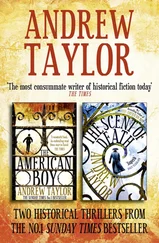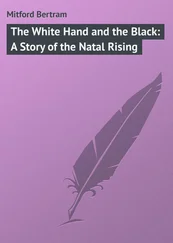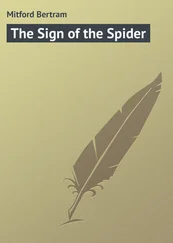It eventually found a home in Frontier , an obscure liberal monthly published in Los Angeles, circulation 2,000, in its issue of November 1958.
Prodded by Bob, the funeral society ordered 10,000 reprints and distributed these far and wide. An immediate consequence was an invitation for me to appear on Caspar Weinberger’s weekly television program, “Profile, Bay Area,” in a debate on the Bay Area Funeral Society featuring a Unitarian minister and myself versus two undertakers, who proved to be wildly comic adversaries.
Developments now came thick and fast. Terrence O’Flaherty, television columnist for the San Francisco Chronicle , reported that the program had generated more mail to his column than any public event since The Bad Seed was performed at a local junior high school. Roul Tunley, a staff writer on the Saturday Evening Post , read O’Flaherty’s column and decided that the funeral society would be a good subject for the Post . His article, entitled “Can You Afford to Die?,” came out in June 1961. Although I was actually sadly inactive in the funeral society, Tunley depicted me as “an Oakland housewife leading the shock troops of the rebellion to undermine the funeral directors, or ‘bier barons,’ and topple the high cost of dying.”
The public reaction was absolutely astonishing. The Post editor reported that more mail had come in about Tunley’s piece than about any other in the magazine’s history, and observed that it “seemed to have touched a sensitive nerve.” Bob got a call from the Oakland postmaster: “We have hundreds of letters here addressed simply ‘Jessica Treuhaft, Oakland,’ giving no street or number.” (They were eventually delivered. One envelope bore the stark direction “Jessica Treuhaft, Cheap Funerals, Oakland.”)
Surely this spate of letters showed enough public interest in the subject to warrant consideration of a book? I wrote to Roul Tunley, urging him to expand his piece into a book. He replied that he was too busy with other assignments. “Why don’t you write it?” he suggested.
Bob and I discussed this possibility. I said I would consider it only if he would help and work with me on it full time. And so it was settled.
Aside from the usual difficulties that inevitably occur (at least in my experience) in the course of writing, a crisis of huge proportions threatened to sink the whole endeavor when the book was about half finished. At the outset, I had obtained contracts from the two publishers who had taken my first book, Hons and Rebels (in America, Daughters and Rebels ), published in 1960: Victor Gollancz in England, and Houghton Mifflin in the U.S., with whom I was on the friendliest terms. They had both been pleased with the outline and first chapter of the funeral book. At some point I sent them more chapters, including a detailed account of exactly what happens in the funeral director’s inner sanctum, the embalming room, which is strictly off-limits to the public, and especially to the family of the deceased. Hoping to infuse this admittedly revolting subject with a touch of macabre humor, I cast the whole description in mortuary jargon (see chapter 5, “The Story of Service”).
To my extreme dismay, Victor Gollancz and the editor at Houghton Mifflin with one accord demanded the excision of this passage.
From Houghton Mifflin: “We think that you make your book harder to sell by going at too much length and in too gooey detail into the process of embalming.” From Gollancz: “The joke, such as it is, surely is going on far too long. I cannot imagine any publisher here wanting it.”
This was devastating news. As embalming is the ultimate fate of almost all Americans, the economic base of the funeral industry, and as practiced on a mass scale a uniquely American practice, to omit a description of it was unthinkable. We considered finishing the book and reproducing it for self-publication. At this point, my brilliant agent, Candida Donadio, stepped in. She found a publisher, Robert Gottlieb of Simon & Schuster.
Thenceforward, all was plain sailing. Gottlieb, at the age of thirty something of a prodigy in the publishing world, loved the embalming chapter and made an inestimable contribution to the book as a whole.
Months before The American Way of Death was published, the funeral industry became aware of the work in progress, and it was not long before the trade press rounded upon me in full force. A new menace had loomed on their horizon: the Menace of Jessica Mitford. Headlines began to appear in the undertakers’ journals: JESSICA MITFORD PLANS ANTI-FUNERAL BOOK, AND MITFORD DAY DRAWS CLOSER!
When Mortuary Management began referring to me as Jessica tout court , I felt I had arrived at that special pinnacle of fame where the first name only is sufficient identification, as with Zsa Zsa, Jackie, or Adlai. Greedily I gobbled up the denunciations: “the notorious Jessica Mitford”; “shocker”; “stormy petrel.”
In an article headlined WHO’S AFRAID OF THE BIG, BAD BOOK? the editor of Mortuary Management said there was little to fear because books about “the Profession” never enjoy large sales. He knew this because his dad once wrote a book about funeral service, and although he took an ad in the Saturday Evening Post , it sold only three hundred copies.
My husband Bob and I were inclined to agree with his estimate; we did not anticipate a readership much beyond Unitarians, funeral society members, and other advocates of funeral reform, a relatively tiny group. Not so Bob Gottlieb. A few months before publication, he rang up to say the first printing would be 7,500. Some days later, he told us this had been increased to 15,000. Then he telephoned again: the first printing was now set at 20,000. I found this slightly worrying; “Aren’t you afraid that we’ll end up with a final chapter, ‘Remainders To Be Seen’?” I asked him. I need not have worried. On publication day in August 1963, the book went out of stock, the first printing having been sold out.
The response was nothing short of thrilling. To my extreme pleasure, the reviewers not only lavished unstilted praise, they also got the joke. Thus the New York Times: “A savagely witty and well-documented exposé …” New York Herald Tribune: “Bizarre and fantastic… a wry account of the death business.” San Francisco Chronicle: “Explosive. Continually absorbing. Often very funny.” Cosmopolitan: “A brilliant book… written so wryly it is difficult to consider it an exposé …” National Guardian: “One of the strangest and funniest things in literature… astonishing, but exceedingly funny.” The Reporter: “She has the rare ability to make the macabre hilariously funny.” Denver Sunday Post: “Sane observations and witty… sardonic commentary …”
The American Way of Death zoomed to No. 1 on the New York Times best-seller list, where it stayed for some weeks. CBS broadcast an hour-long documentary, “The Great American Funeral,” based on the book. Major newspapers (Miami Herald; New York Herald Tribune; Denver Post; San Francisco Chronicle; Chicago Tribune; Cleveland Plain Dealer) published in-depth reports on funeral costs and practices in their respective communities. For a while, funerals were topic A on radio talk shows, with listeners calling in to relate their own dismal experiences at the hands of morticians. Walt Kelly and Bill Mauldin mocked the funeral industry in syndicated cartoons. Elaine May and Mike Nichols produced a televised skit on “That Was the Week That Was” starring Elaine as “your Grief Lady.” TV and radio stations around the country featured debates between funeral directors and myself. Clergy of all faiths reinforced the major theme of The American Way of Death and denounced ostentatious, costly funerals as pagan. Membership in the nonprofit consumer-run funeral and memorial societies rose from seventeen thousand families to close to a million.
Читать дальше
